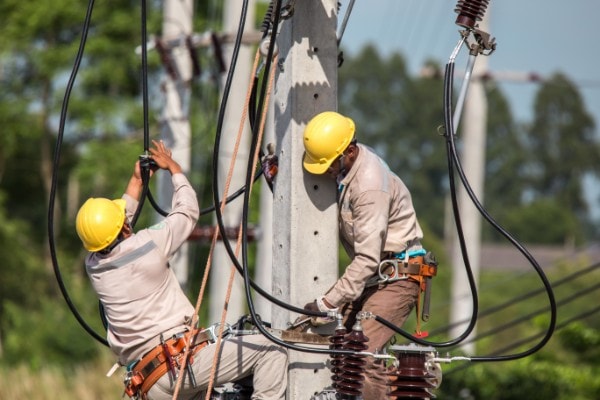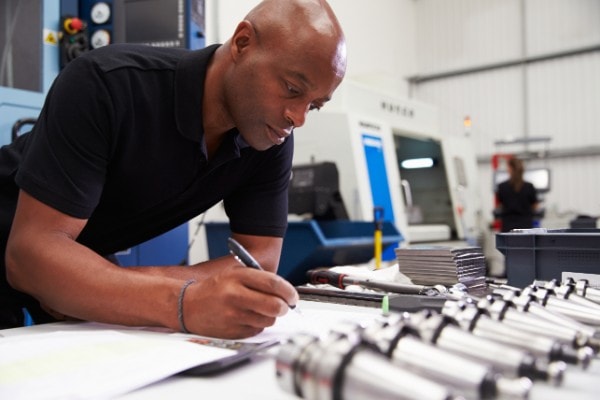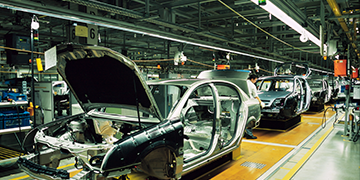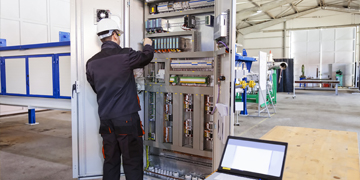Fuse Fundamentals: Everything You Need to Know
Fuse Fundamentals: Everything You Need to Know
Fuses exist for circuit protection. They're a sacrificial component whose job is to protect more sensitive (usually more expensive!) components downstream.
Composed of two metal caps/ends, with a non-conductive material in the middle that forms the body of the fuse. Caps/ends are connected internally by an element, the design and composition of which determines the performance of the fuse.
Fuse bodies are made from two materials, broadly speaking:
- Glass. Generally only found in miniature fuses (i.e., 5x20mm, 6x32mm). Sometimes also found in 10x38mm. Also known as 'low rupturing capacity.'
- Ceramic. They come in all sizes - from little 3x8mm PCB fuses, up to 442mm MV fuses. Also known as 'high rupturing capacity' -
'HRC'. When people ask for a 'HRC fuse', what they're saying is a 'ceramic fuse'.
Performance Categories
| Type | Also Known As | Text | Description |
| Slow | Slow Blow Time Delay Träg Motor Start | T TD aM | Tolerate 500% of rated current for minimum of 10 sec. Copper element. |
| Medium | Medium Blow Medium Time Delay | M | Tolerate 500% of rated current for minimum of 4-6 sec. Copper element. |
| Fast | Fast Blow Flink General Purpose "Normal"/Standard | F gG (gL) | Tolerate 500% of rated current for 0.05-2 sec. Copper element. |
| Semiconductor | Ultra Rapid Very Fast Flink Flink | FF aR gPV | Extremely fast. Element opens within first ½ cycle of overcurrent. Pure silver element. |
Types of Fuses - Miniature
- Small cylindrical fuses. Most commonly 5x20 (M205) and 6x32mm (3AG), but there are a myriad of other sizes. Originally designed for automotive electrical systems (AG = Auto Glass).
- Glass and ceramic bodies.
- Fast acting, medium acting, slow acting and ultra rapid versions available, from 32V to 1000V.
- Australux is an old Australian fuse brand (est. 1964) that made miniature and auto fuses, and Fuseco acquired the business in 1997.
Types of Fuses - American Fuses (UL)
- Used in North America (USA, Canada, Mexico). UL Standards (Underwriters Laboratories), rather than IEC.
- They have a very litigious environment, and their fuses reflect that. Many different physical sizes and reject features are manufactured to stop people putting the wrong fuse where it shouldn't go. This results in a huge range of sizes and body types that are not as interchangeable as European-style fuses.
- Spare parts mostly in Australia, but useful for fault current limiting. Also often used on drives.
Types of Fuses - European Fuses (IEC)
- IEC (International Electrotechnical Commission) fuse standards are used by most of the world, except North America (USA, Canada, Mexico).
- Body styles tend to be simple, with little physical variation within ranges, and overlap in amp ratings.
- Also good for fault current limiting.
Fuse Applications
When fuses operate (blow), they can have the effect of reducing the fault current of a short circuit. When the element is melted, they suddenly (within the first half cycle) introduce a high resistance to the current magnitude and duration, which has the effect of reducing the possible peak current on the downstream side of the fuse.
Fuse manufacturers publish curves for current limiting fuses that allow you to calculate the magnitude of the fault that gets through. This interests people dealing with switchboards and applications that have a maximum fault rating, who may want to reduce the fault coming in.
Types of Fuses – British Standard
- Used mostly in Britain and their colonies (Australia, NZ, Malaysia, India). Made to a subset of IEC standards known as the British Standard, which was revised in 1988 (BS88).
- Clip in & bolt in fuses that are gG (fast acting) by definition (also an ultra rapid range).
- Used for cable and line protection, and very robust. Very common in industrial machinery, motors, and the electrical distribution network.
- Red Spot fuse holders.
- Service fuses come under the BS88 umbrella (BS1361).
Fuse Applications – BSUR in UPS
The Bussmann FEE200 is installed in some UPS battery cabinets.
Types of Fuses – Service Fuses
- Found at the point on incoming supply where the grid meets private property, such as points of attachment and meter boxes. Stops short circuits originating from the grid getting into properties.
- Designed to Government-mandated performance standards and will sit in an enclosed holder 24/7 in the harsh Australian climate, and still perform as required.
- Common sizes are 30x57mm in NSW, and 22x58mm for everywhere else in Australia. There are other models around in older installations: 14x51mm, 17x51mm and 20x76mm.(FuseMaster 3057F, 2258F, 1451F, 1751F, 2076F).
- Have their own dedicated service fuse holders (SFH range).
Types of Fuses – Medium Voltage Fuses
- 1.5kV - 36kV (above that is HV)
- Supply to utilities for use in the distribution network (generation & transmission is mostly HV). Also used by the mines and transformer manufacturers.
Fuse Applications - Medium Voltage Fuses
Why Fuseco?
Fuseco are experts at identifying fuses and we love to help our customers identify fuses & find replacements.
If you’re trying to identify a fuse, please contact the experts at FUSECO. We have 28 years of experience specialising in electrical products. Our friendly staff members will be willing to help you identify exactly what fuse you need.
Call us today for a quote and let FUSECO become your No.1 supplier of fuses.
We're here to help
Talk to an expert today.
Our friendly team of highly trained specialists will quickly assist you.
We promise to respond within 4 business hours (AEST).
Or you will receive $100 off your next purchase. Read how it works.

Reply in 4 Hours

Same Day Dispatch

Lowest Price Guarantee
If you find a cheaper advertised price for an identical item, we will beat that price by 10%! How it works.

Satisfaction Guarantee
If you are not satistfied with your purchase, return it. Read our
our brand portfolio
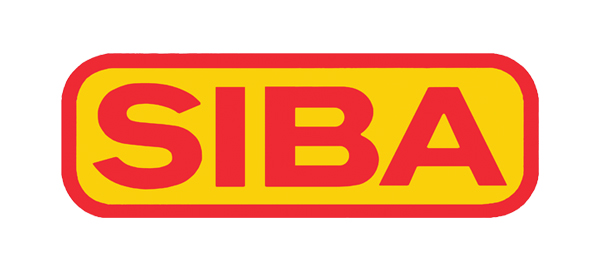

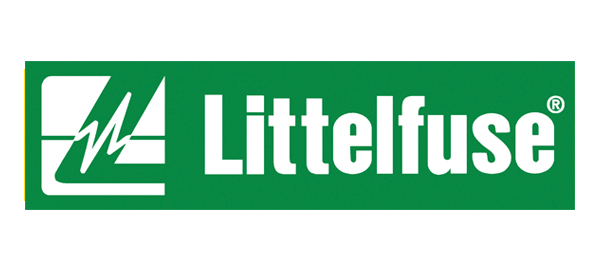

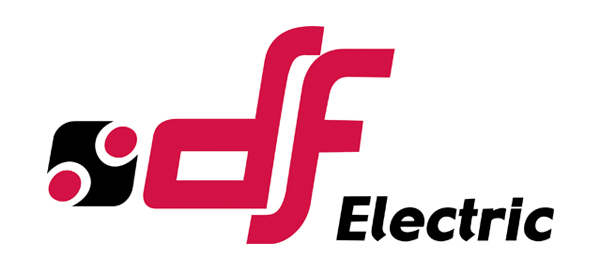


Applicable Industries

Reply in 4 Hours

Same Day Dispatch

Lowest Price Guarantee
If you find a cheaper advertised price for an identical item, we will beat that price by 10%! How it works.

Satisfaction Guarantee
If you are not satistfied with your purchase, return it. Read our
Technical Support
Our experts are all pre-eminent leaders in electrical products who provide excellent support in their areas of expertise.
Technical supportTalk to an expert
Our friendly team are highly trained product experts who really enjoy helping customers find what they need.
call 1300 387 326Enquire by email
We promise to respond within 4 business hours (AEST) or you will receive $100 off your next purchase.
Enquire now





















